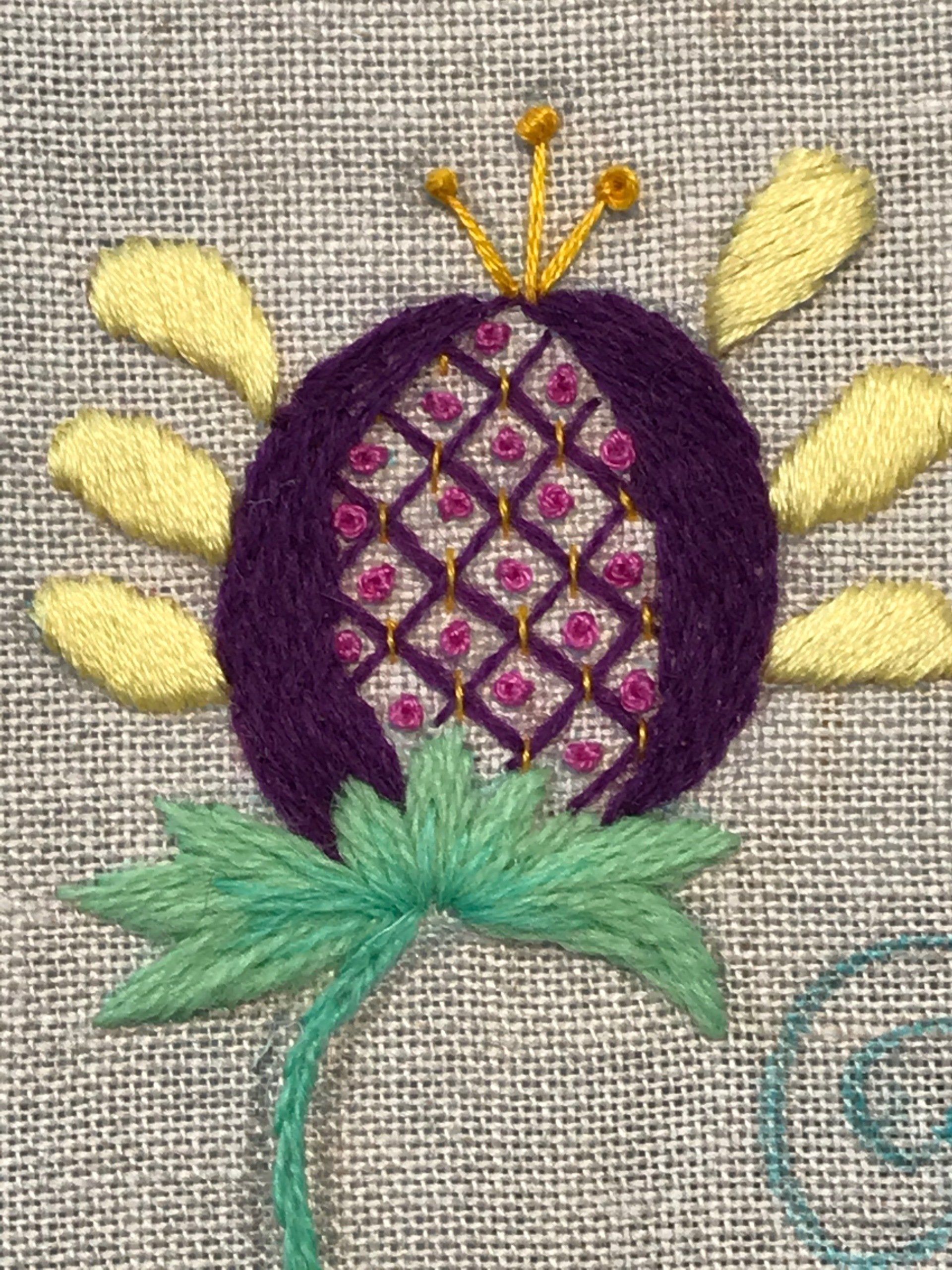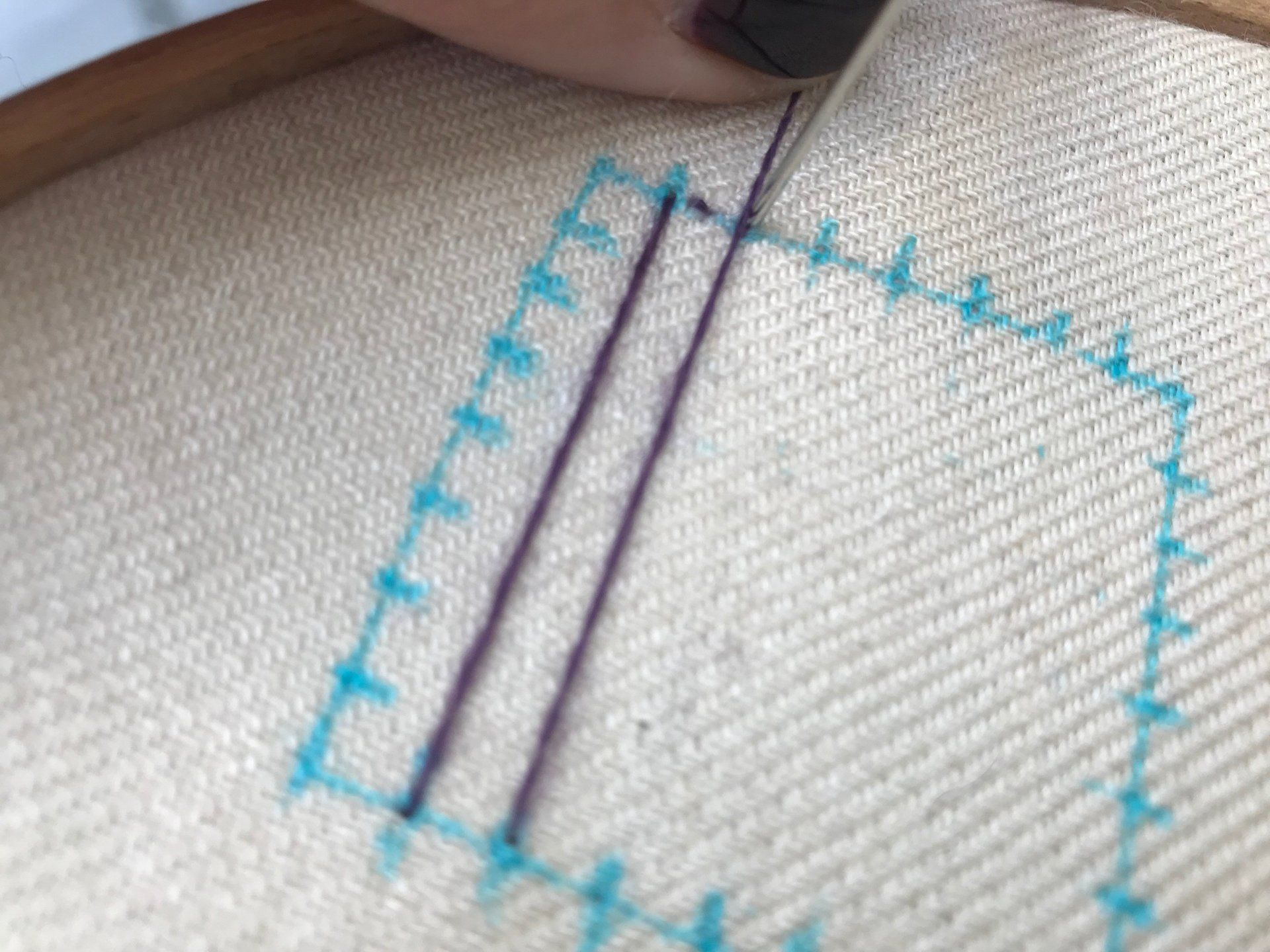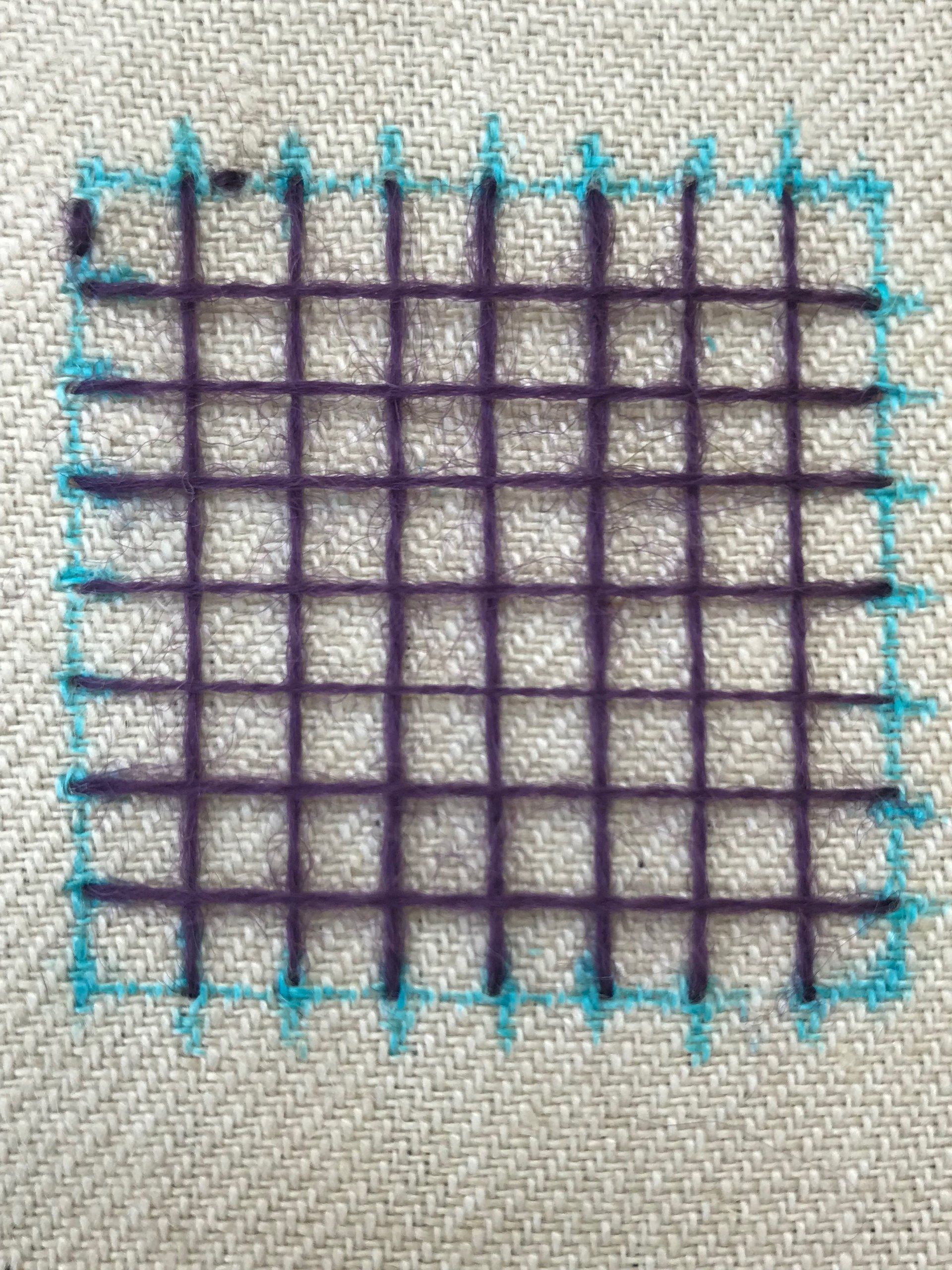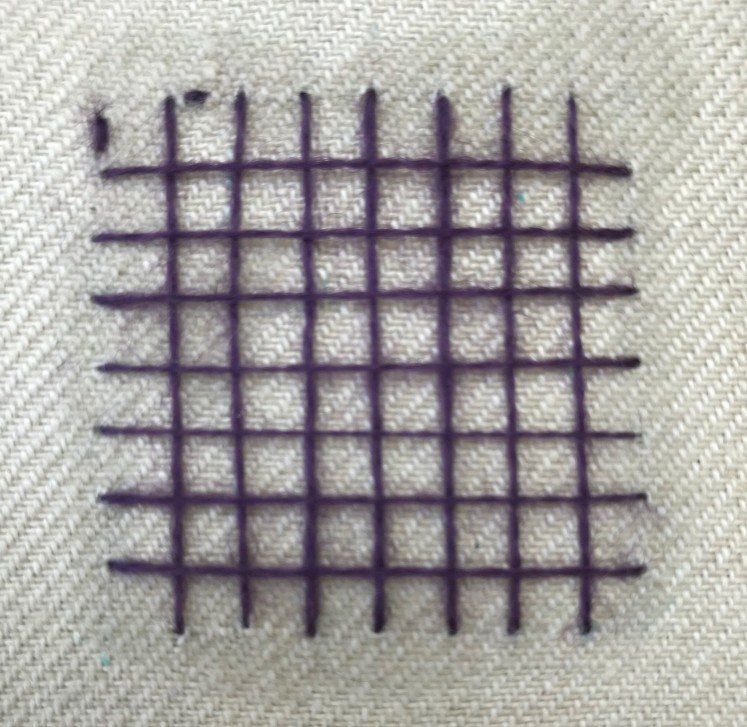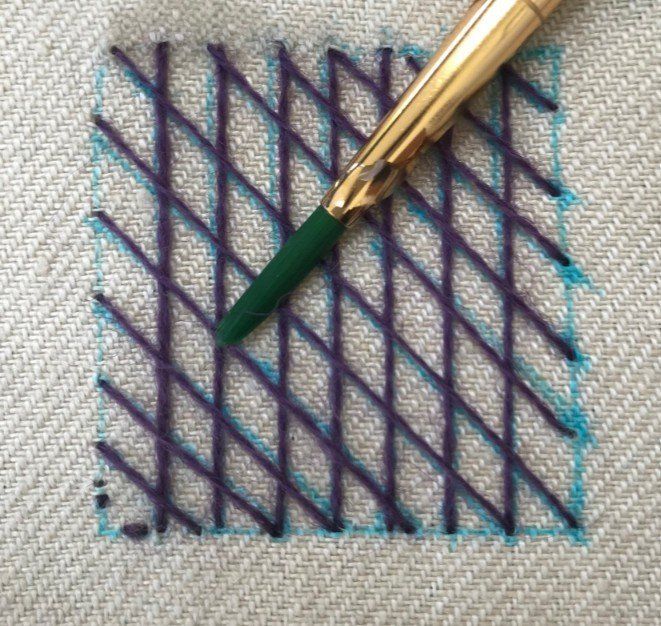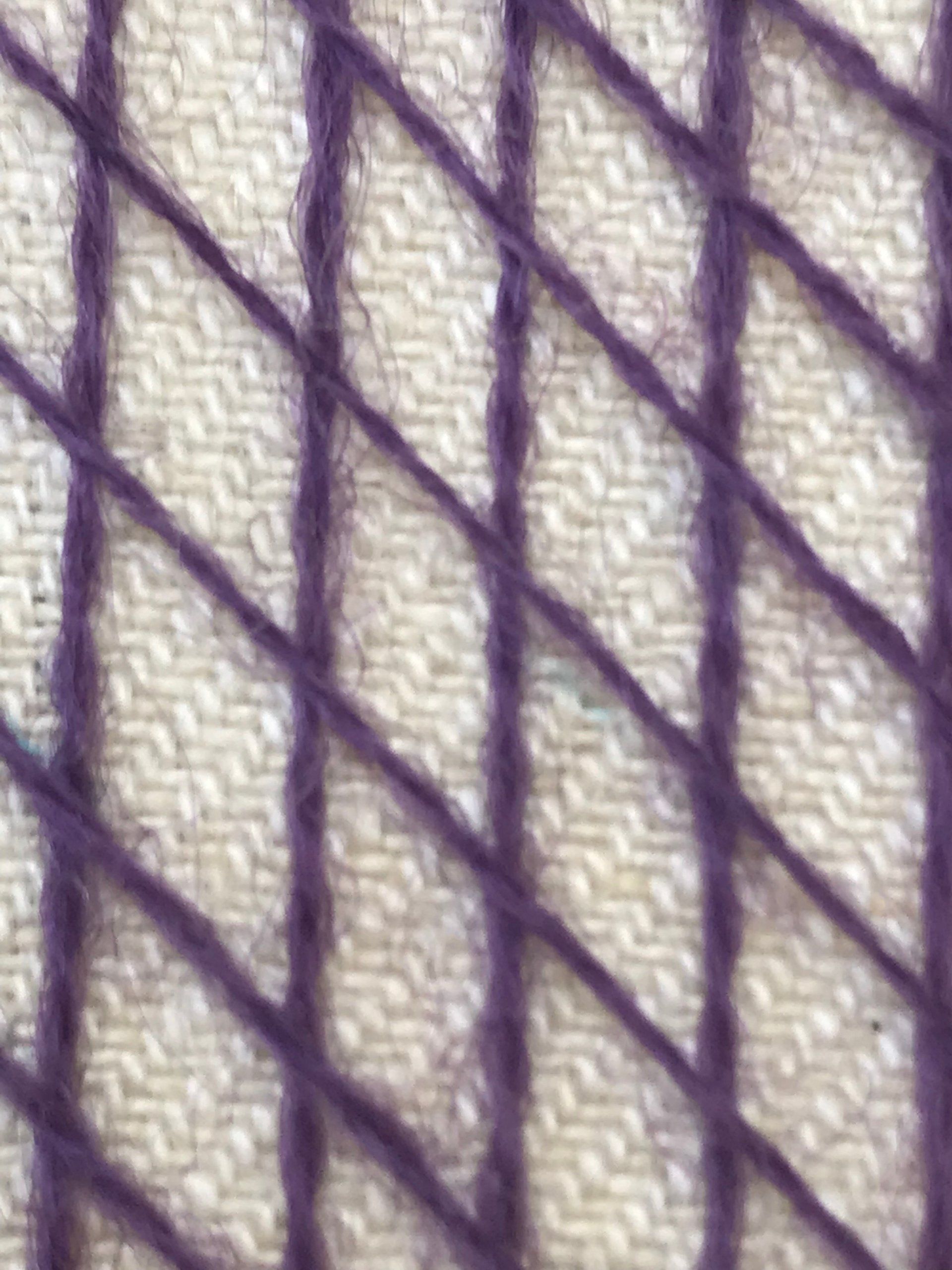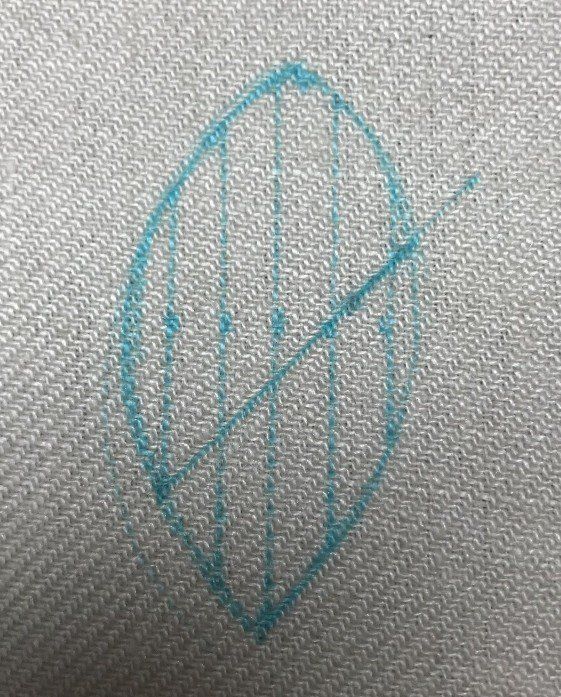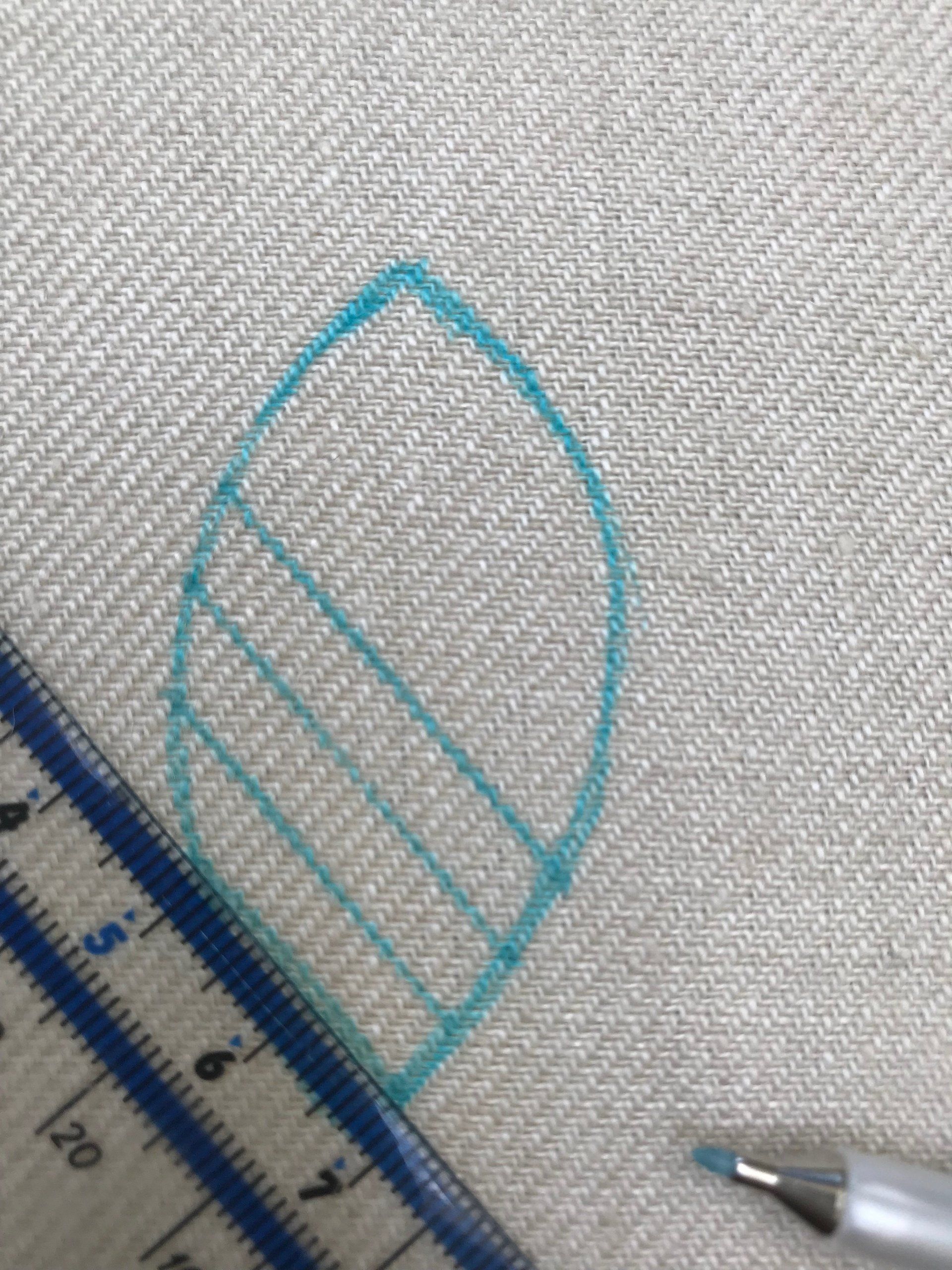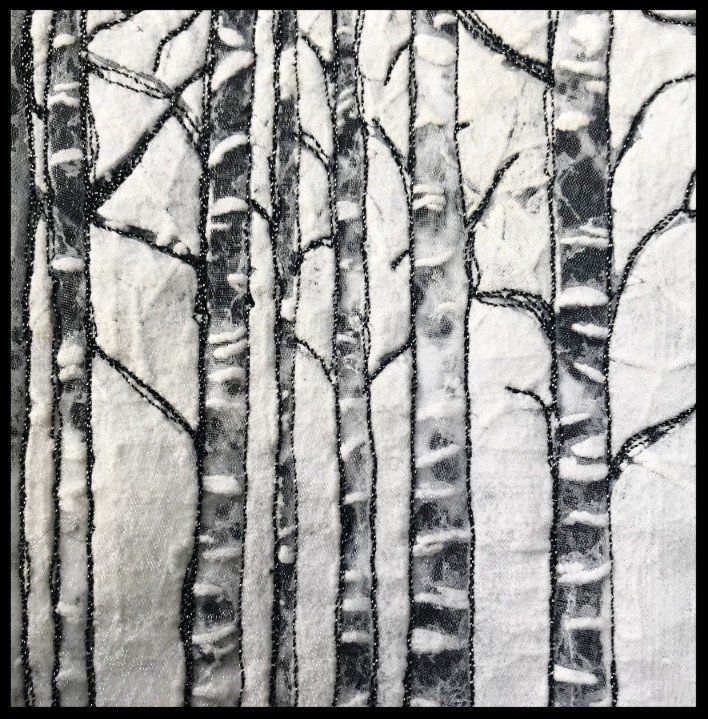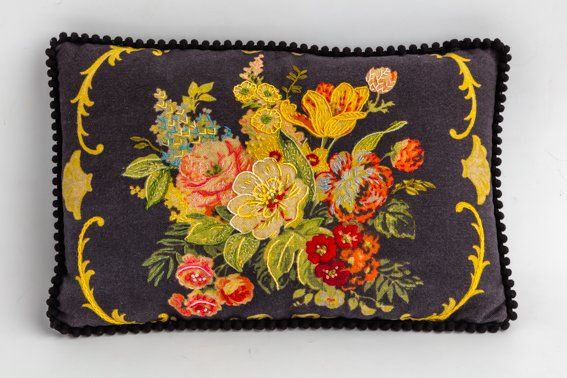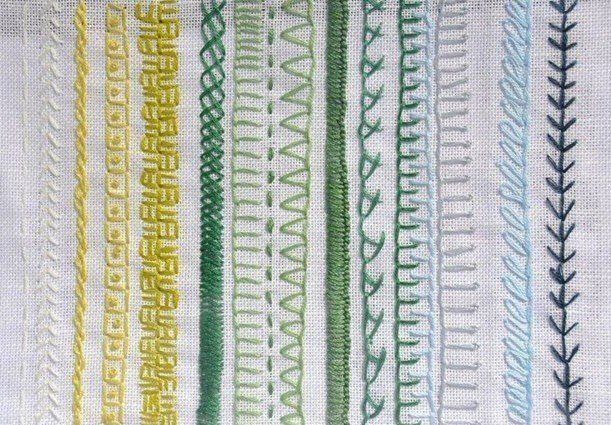A guide on how to understand filling stitches for embroideryTrellis and honeycombe
There are numerous patterns and designs you can make in embroidery for filling stitches but its really important to create a good framework. This blog is for those who want to understand technically how to create the base of the design Its a really good idea to practise in 4cm squares. Use Appleton wool 2 ply or three stranded cotton floss.
Equipment
Any good quality embroidery fabric would be good. I used a linen twill in the samples shown here and 2ply Appleton wool. Apart from the obvious like a good crewel needle it would make life a little easier if you have a plastic see through ruler, protractor and set square. Also a water slouble pen and paintbrush.
How to design trellis couched filling stitch
This is a horizontal and vertical framework of stitching. Its worked here straight onto a linen twill but as you become more experienced you can work it over embroidery stitches such as satin and long and short.
Mark a 4cm square onto linen twill. Use a washable pen. Mark 5mm gaps around the edges.
If you don't feel confident draw lines across in both directions using a set square to make sure the lines run at 90 degrees to each other and are parellel. Otherwise leave the square with the edge spots for you to use as a guide. See the picture below.
Start with the vertical lines. Work a knot and double stitch into the edge. Cut the knot off after the thread is secure and the double stitch will be covered up by the outline stitch. You can hold the thread across the piece if it will help. Bring the needle up and down through the fabric and when you start a new line work along the line where the last stich came down into the fabric.
Continue vertically and then horizontally until the square is finished.
Use a paintbrush with water to remove the blue lines
Now you can have fun. Work out what you would like to do. You need to make sure the stitches are held down. I decided to add another colour to the lattice. (I threaded the vertical rows under the horizontal rows of the first colour) I then stitched a cross stitch to hold all the threads down.
If you want this stitch to be at an angle to the square then draw a guide line down the middle of the piece at 45 degrees and work ALL lines of this line. Make sure all lines sit 90 degrees to each other.
How to create honeycomb filling Stitch
Honeycomb filling stitch is worked on the diagonal. The article here is written to help those understand the process after a while you will find you will be able to judge the diagonal line by using just your eyes.
Start as you did for the trellis filling stich. Mark up a 4cm square and mark off 5mm sections on the vertical lines. Now place the ruler from one corner to the other this will place the next row of lines at a 45 degree angle. Use a protractor if you want to check its at a 45 degree angle. Draw lines across or mark the spots for the needle around the edge at 5mm apart. Make sure you keep the ruler parallel. When you become more experienced you can change the angle up to 60 degrees. This will give you more of a square shape. 45 degrees gives you a lovely diamond shape.
The protractor can be used to check the angel. The picture above just shows the protractor slightly off the vertical line so you can clearly see where you need to place it.
Use a clean paintbrush dipped into water to remove the lines
Experiment with holding threads. Tent and cross stitches can be used.
How to work out the width of lines for a shape
Now to perfect your technique we need to look at shapes as its rare that you will just be embroidering squares.
When you have a shape measure the widest and longest points.
Using trellis stitch as your base
Now you need to work out how many lines would evenly sit across the piece.If I wanted a 5mm gap I need to divide the length and then the width by 5mm. So the width is 30 mm divided by 5... I need 6 lines going across, the last line should hit the edge of the motif and therefore you do not need to lay it down. Therefore you have 5 lines going across.
The length is 50mm. Divide by 5 is 10 therefore you have 9 lines going down the work.
Draw the lines in making sure you start at the longest and widest points. Check the lines are at right angles using a set square as shown.
The motif finished using a tent stich to hold the trellis work down and then a french knot in every alternate square.
Using honeycomb filling as your base
This base stitch gives a diamond effect.This is can be very pretty and is excellant if using laszy daisy stich as a fill in stitch.
You need to draw the longest directional lines in first and I generally draw then down the length of the shape. If you want to experiment then photocopy the shape onto some paper and draw different angled starting lines and see what you can achieve. Start like you did the trellis filling stitch. Measure the width and divide by a number as equally as you can. So the above shape is 30mm. Divide by 5mm and we have 6 starter lines. Remember the last line will fall on the outer edge so you will not need to draw it in.
You now need to place the protrator onto one of the lines drawn. Line up the bottom line of the protrator onto one of the lines. Place a ruler onto the 45 degree angle mark as shown above. Draw lines on the top and bottom.
The first line is the important guide line. You can now use this to draw the remaining parellel lines in.
Starting at an Angle
When you gain more confidence you can start drawing diagonal lines initially. Its really good to train your eye to do this. If you draw lots of shapes on paper and experiment. Just remember when you draw the first set of lines to use the protractor to get the first line of the oposite grid lines to set them up correctly.

